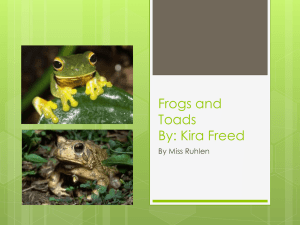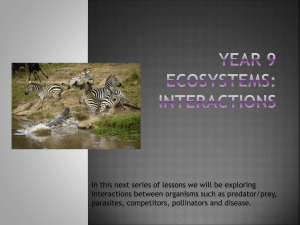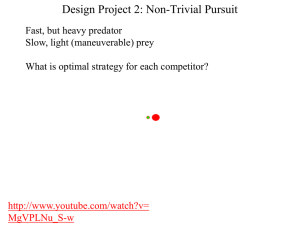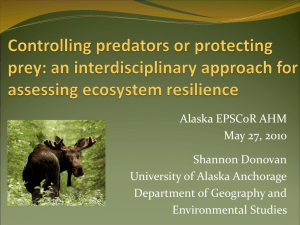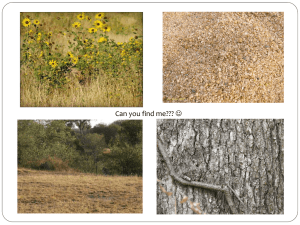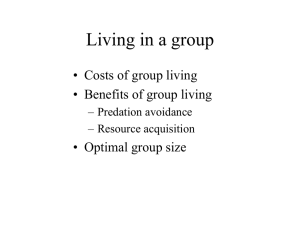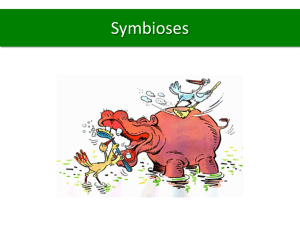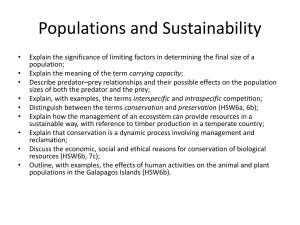Positive and negative species interaction
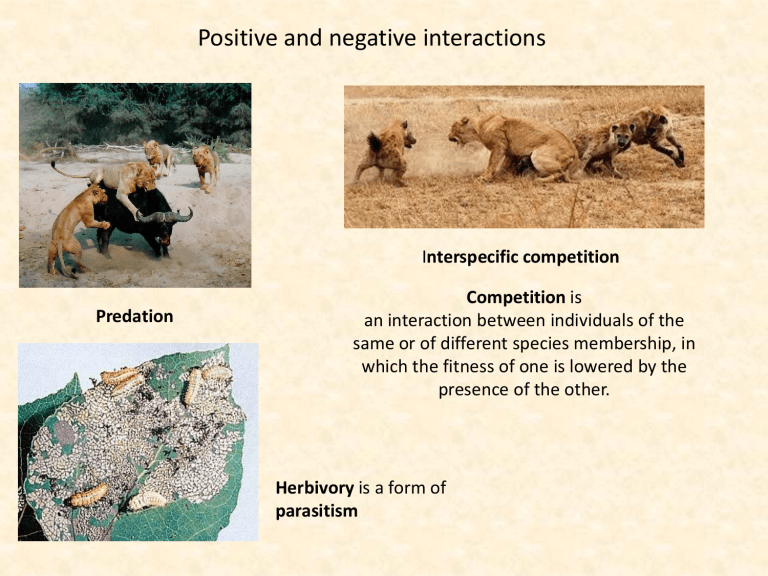
Positive and negative interactions
Predation
Interspecific competition
Competition is an interaction between individuals of the same or of different species membership, in which the fitness of one is lowered by the presence of the other.
Herbivory is a form of parasitism
Symbiosis is any type of relationship where two individuals live together
Amensalism is a relationship between individuals where some individuals are inhibited and others are unaffected.
Parasitism is any relationship between two individuals in which one member benefits while the other is harmed but not killed or not allowed to reproduce.
Parasitoidism is a relationship between two individuals in which one member benefits while the other is not allowed to reproduce or to develop further
Commensalism is a relationship between two individuals where one benefits and the other is not significantly affected.
Mutualism is any relationship between two individuals of different species where both individuals benefit.
Mutualism is the way two organisms of different species exist in a relationship in which each individual benefits. Mutualism is the oposite to interspecific competition.
Client– service relationships
Pollination
In plant succession early arriving plants pave the way for later arrviing by modifying soil condition.
Mutualism is often linked to coevolutionary processes
Facilitation is a special form of commensalism and describes a temporal relationship between two or more species where one species benefits from the prior (and recent) presence of others.
Facilitation generally increases diversity.
Intraspecific competition
Canis lupus
Contest (interference) competition is a form of competition where there is a winner and a loser
Mytilus edulis
Scramble (exploitation,
diffuse) is a type of competition in which limited resources within an habitat result in decreased survival rates for all competitors.
Mate competition
Territoriality
Territories imply a more or less even distribution of individuals in space
Territoriality is a form of avoidance of intraspecific competition 𝜎 2 ≪ 𝜇
The variance in distance is much less than the mean distance
Territory
Home range
Home ranges might overlap
Overlap
Home range
Territory
Density dependent regulation and diffuse competition
The stem self thinning rule
Trees is a forst have certain distances to each others
Leaf area L increases with plant density N
L= l
N where L is the average leaf area per plant.
This area and mean plant weight w increase with stem diameter by l
=aD 2 and w=bD 2
Therefore
𝐿
3/2 𝑤 = 𝑏 𝑤 = 𝑐𝑁 𝑎
−3/2
𝑁 −3/2
The -3/2 self thinning rule
Modified from Osawa and Allen (1993)
Density dependent regulation of population size results from intraspecific competition
Density independence
Density dependence
Tribolium confusum
Data from Bellows 1981. J. Anim. Ecol. 50
Density dependence
Vulpia fasciculata
Density independence
Data from Ebert et al. 2000. Oecologia 122
Salmo trutta
Density dependence
Density independence
Data from Allen 1972, R. Int. Whaling Comm. 22.
Peak reproduction at intermediate densityy
1
𝑁 𝑡+1
= 𝑟𝑁 𝑡
1/r 𝑦 = 𝑚𝑥 + 𝑏
N t
K
𝑁 𝑡+1
= 𝑟 𝑡+1 𝑁
0
𝑁 𝑡
𝑁 𝑡+1
=
1 −
𝐾
1 𝑟
𝑁 𝑡
+
1 𝑟
𝑁 𝑡+1
=
1 + 𝑟𝑁 𝑡 𝑟 − 1
𝐾 𝑁 𝑡
𝑁 𝑡+1
= 𝑟𝑁 𝑡
1 + 𝑎𝑁 𝑡
𝑁 𝑡+1 𝑟𝑁 𝑡
=
1 + 𝑎𝑁 𝑡 𝑏
First order order recursive function of density dependent population growth
Nicholson and Baily model
Competitive exclusion principle
In homogeneous stable environments competitive dominant species attain monodominancy.
Paramecium aurelia
Georgii Frantsevich Gause
(1910-1986)
Paramecium caudatum Joint occurrence
Data from Gause 1943, The Struggle for Existence
Applying this principle to bacterial growth Gause found a number of antibiotics
Interspecific competition
Tribolium confusum Tribolium castaneum
Temperature Humidity Percentage wins
Tribolium Tribolium
Hot Moist confusum
0 castaneum
100
Temperate Moist
Cold Moist
Hot Dry
Temperate Dry
Cold Dry
14
71
90
87
100
86
29
10
13
0
Data from Park 1954. Phys. Zool. 27.
Two species of the rice beetle Tribolium grown together compete differently in dependence on microclimatic conditions.
The Lotka – Volterra model of interspecific competition 𝑑𝑁 𝑑𝑡
= 𝑟𝑁
𝐾 − 𝑁
𝐾 𝑑𝑁1 𝑑𝑡
= 𝑟𝑁1
𝐾1 − 𝑁1 − 𝛼𝑁2
𝐾
Alfred James
Lotka (1880-
1949)
N = N + α𝑀 𝑑𝑁2 𝑑𝑡
= 𝑟𝑁2
𝐾2 − 𝑁2 − 𝛽𝑁1
𝐾
Vito Volterra
(1860-1940)
𝐾1 − 𝑁1 − 𝛼𝑁2 = 0
At equilibrium: dN/dt = 0
𝐾1 − 𝑁1 − 𝛼𝑁2 = 𝐾2 − 𝑁2 − 𝛽𝑁1
If competitive strength differs one species vanishes
Certain conditions allow for coestistence
If carrying capacity differs one species vanishes
The Lotka Volterra model predicts competitive exclusion
But the oberserved species richness is much higher than predicted by the model.
𝑑𝑁1 𝑑𝑡
= 𝑟𝑁1
𝐾1 − 𝑁1 − 𝛼𝑁2
𝐾
The model needs stable reproductive rates stable carrying capacities stable competition coefficients Grassland are highly diverse of potentially competing plants
It needs also homogeneous environments
Randomy fluctuating values of r, K, a
, and b
.
a
> b K1 > K2
Unpredictability and changing environmental conditions as well as habitat heterogeneity and aggregation of individuals promote coexistence of many species.
Competition for enemy free space (apparent competition)
Plodia interpunctella Venturia canescens Ephestia kuehniella
Extinction
Data from Bonsall and Hassell 1997, Nature 388
Predator mediated competition might cause extinction of the weaker prey
Character displacement and competitive release
Chalcosoma caucasus
Interspecific competition might cause species to differ more in phenotype at where where they co-occur than at sites where they do not co-occur
(character
displacement)
Chalcosoma atlas
Rhinoceros beetles
Interspecific competition might cause a lower phenotypic or ecological variability of two species at sites where both species compete.
Competitive release is the expansion of species niches in the absence of interspecific competitors.
Bodey et al. 2009.
Biol.Lett 5: 617
Raven
Raven +
Crows
Predation
Erigone atra
Generalist predator
Canada lynx and snowshoe hare
Specialist predator
Polyphages
Oligophages
Monophages
Maximum yield
Searching time
Stopping point
Trade-offs in foraging
Animals should adopt a strategy to maximuze yield
Optimal foraging theory
Holling’s optimal foraging theory
𝐷𝑒𝑛𝑠𝑖𝑡𝑦 𝑓𝑜𝑜𝑑 𝑡 𝑡𝑟𝑎𝑣𝑒𝑙
𝐹𝑜𝑜𝑑 𝑖𝑛𝑡𝑎𝑘𝑒 ∝
1 + 𝑎𝐷𝑒𝑛𝑠𝑖𝑡𝑦 𝑓𝑜𝑜𝑑 𝑡 ℎ𝑎𝑛𝑑𝑙𝑖𝑛𝑔
Great tits forage at site of different quality
How long should a bird visit each site to have optimal yield?
Predicted energy intake from travel and handling time
10 20
3
15
18
Predicted energy intake from travel time
11
4
17
Parus major
8
9
Cowie 1977
Specialist predators and the respective prey often show cyclic population variability
Canada lynx and snowshoe hare
Hudson’s Bay Company
Data from MacLulick
1937, Univ. Toronto
Studies, Biol. Series 43
Bracyonus calyciflorus
12 year cycle
Chlorella vulgaris
Cycles of the predator follow that of the prey
Cycles might be triggered by the internal dynamics of the predator – prey
interactions or by
external clocks that is environmental factors of regular appeareance
Most important are regular climatic variations like El Nino, La
Nina, NAO.
Data from
Yoshida et al.
2003, Nature
424
The Lotka Volterra approach to specialist predators 𝑑𝑃 𝑑𝑡
= −𝑒𝑁 𝑑𝑃 𝑑𝑡 𝑑𝑁
= 𝑟𝑁 − 𝑎𝑃𝑁 𝑑𝑡
= 0 → 𝑁 = 𝑒 𝑓𝑎 𝑑𝑃 𝑑𝑡
= 𝑓𝑎𝑁𝑃 − 𝑒𝑃 𝑑𝑁
= 0 → 𝑃 = 𝑑𝑡 𝑟 𝑎
The equilibrium abundances of prey and predator e: mortality rate of the predator r: reproductive rate of the prey faN: reproductive rate of the predator f: predator efficieny aP: mortality rate of the prey a: attack rate
In nature most predator prey relationships are more or less stable.
The Lotka Volterra models predicts unstable delayed density dependent cycling of populations
Any deviation from the assumption of the Lotka Volterra model tends to stabilize population:
• Prey aggregration
• Density dependent consumption
• Functional responses
Environmental heterogeneity and predator prey cycles
Eotetranychus sexmaculatus
Typhlodromus occidentalis
Simple unstructured environment
Heterogeneous environment
Habitat heterogeneity provides prey
refuges and stabilizes predator and prey populations
Functional response
Type II Holling response Type III Holling response
Microplitis croceipes
Type I response
Calliphora vomitoria
Predator attak rates are not constant as in the Lotka Volterra model
Microplitis croceipes Calliphora vomitoria
Variability, chaos and predator prey fluctuations 𝑑𝑁
= 𝑟𝑁 − 𝑎𝑃𝑁 𝑑𝑡
Lotka Volterra cycles with fixed parameters a, e, f, r.
𝑑𝑃 𝑑𝑡
= 𝑓𝑎𝑁𝑃 − 𝑒𝑃
Lotka Volterra cycles with randomly fluctuating parameters a, e, f, r.
Stochasticity tends to stabilize populations
Dynamic equilibrium
Any factor that provides not too extreme variability into parameters of the predator prey interaction tends to stabilize populations.
Fixed parameter values cause fast extinction.
Herbivory
Feeding Strategy
Frugivores
Folivores
Nectarivores
Granivores
Palynivores
Mucivores
Xylophages
Diet
Fruit
Leaves
Example
Ruffed lemurs
Koalas
Nectar
Seeds
Hummingbirds
Hawaiian Honeycreepers
Pollen Bees
Plant fluids, i.e. sap Aphids
Wood Termites
Plant defenses against herbivors
Many plants produce secondary metabolites, known as allelochemicals, that influence the behavior, growth, or survival of herbivores. These chemical defenses can act as repellents or toxins to herbivores, or reduce plant digestibility.
Alcaloide (amino acid derivatives): nicotine, caffeine, morphine, colchicine, ergolines, strychnine, and quinine
Terpenoide, Flavonoids, Tannins
Mechanical defenses: thorns, trichomes…
Mimicry
Mutualism: Ant attendance, spider attendance Digitalis
Negative feedback loops occur when grazing is too low
Functions of herbivores in coral reefs
Herbivorous fish (Diadema)
Positive feedback loops occur when grazing is high
Reduced structural complexity
Decreasing fish recruitment
Increased structural complexity
Increasing fish recruitment
Low coral cover
Low grazing intensity
High coral cover
High grazing intensity
Decreasing coral recruitment
Hay and
Rasher
(2010)
Increasing algal cover
Overfishing of herbivorous fish might
Increasing coral recruitment cause a shift to algal dominated low divesity communities
Decreasing algal cover
